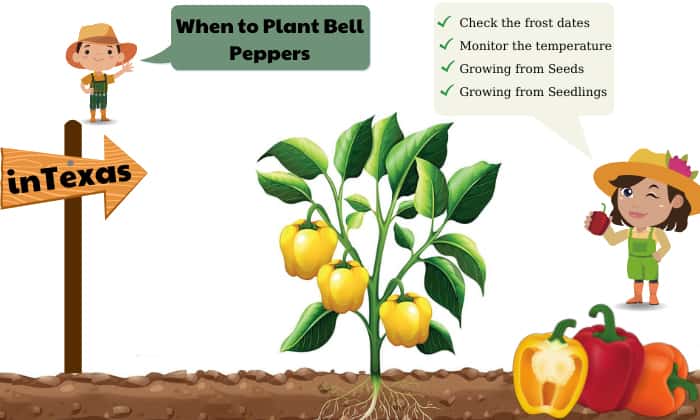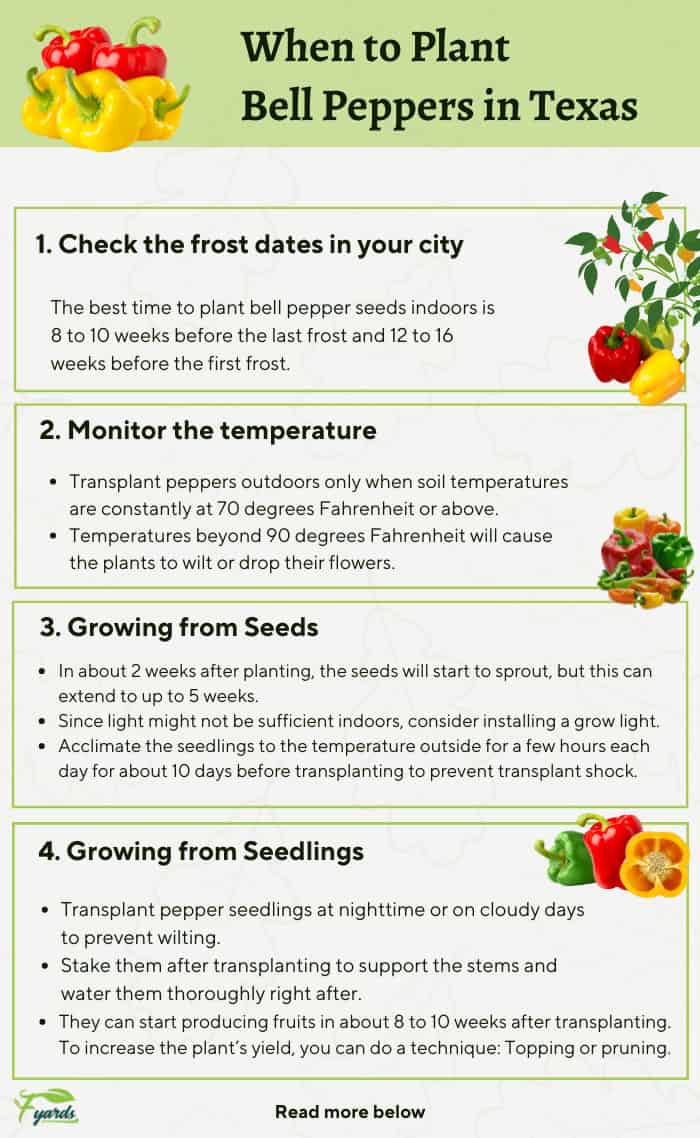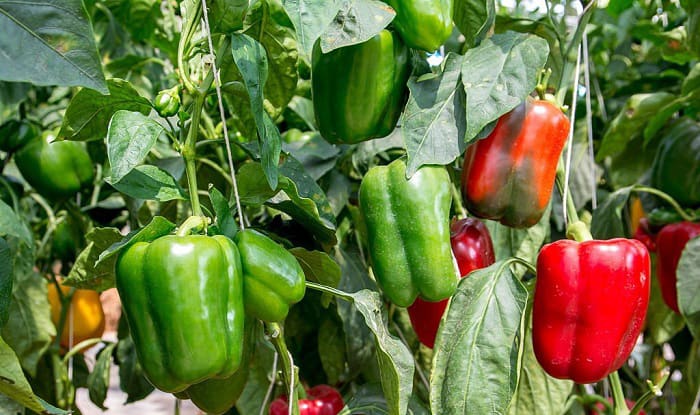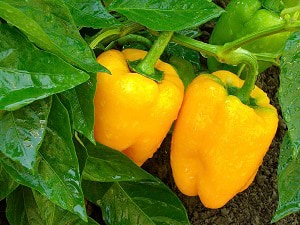
A native crop from Mexico, Central and South America, bell peppers have become staple produce in the United States. If you are wondering when to plant bell peppers in Texas, you’re in luck as these plants prefer the region’s warm climate.
Bell pepper seeds germinate and grow well when the temperatures are between 70 degrees to 80 degrees Fahrenheit. It is ideal to plant pepper seeds when the spring frost is almost over and transplant them outside as the temperature rises and the threat of frost passes.
Table of Contents
Best Time to Plant Bell Peppers
Coming from the genus Capsicum, bell peppers are the sweeter cousins of chili peppers. They grow and thrive in places with full sun and warm climates and are not very tolerant of frost. Here are some things to take note of when planning to plant bell peppers:
1. Check the frost dates in your city
Before you start planting bell peppers, it is always recommended to check the first and last frost dates in your region. The best time to plant bell pepper seeds indoors is 8 to 10 weeks before the last frost and 12 to 16 weeks before the first frost.
In Austin, for example, the last spring frost this year falls on March 18 and the first frost is expected to be on November 10. For a good harvest, you can plant bell peppers in March or August.
If you garden in spring, you can transplant the peppers outdoors two to three weeks after icy weather ends.
2. Monitor the temperature
Transplant peppers outdoors only when soil temperatures are constantly at 70 degrees Fahrenheit or above. Bear in mind, though, that while bell peppers are warm-climate crops, they should be protected from extreme heat during the peak summer months.
Temperatures beyond 90 degrees Fahrenheit will cause the plants to wilt or drop their flowers. To protect your crops, ensure thorough watering when the temperatures are at their highest and install a lightweight fabric over them to block some sunlight.
Bell Pepper Varieties
Bell peppers are also known as paprika, capsicum, and sweet peppers in other parts of the world. They come in different colors – the most common ones are green, red, and orange, while rare varieties are pale yellow and purple.
Usually, green varieties are unripe and eventually ripen and change their color into red, orange, or yellow. If you want to grow a specific bell pepper color, check out these varieties:
- Red bell peppers: Lady Bell, Gypsy, Bell Boy, Lipstick
- Orange bell peppers: Milena, Orange Sun
- Yellow bell peppers: Golden California Wonder
Seeds versus Seedlings
Bell peppers require full sun and well-draining soil to successfully grow. Depending on the condition of your soil, compost or fertilizer might also be needed to ensure that your plants get all the nutrients they need.
3. Growing from Seeds
When growing bell peppers from seed, it is recommended to start them indoors to maintain the ideal conditions necessary for their growth and to protect them from harsh weather.
In about 2 weeks after planting, the seeds will start to sprout, but this can extend to up to 5 weeks, so patience is required.
Since light might not be sufficient indoors, consider installing a grow light to act as a light source while the seedlings are still developing.
Acclimate the seedlings to the temperature outside for a few hours each day for about 10 days before transplanting to prevent transplant shock.
If the seedlings are too tall or leggy, plant them deep, up to their lowest leaves so that they won’t be top-heavy and topple over. You can also stake the plants to provide better support as they mature.
4. Growing from Seedlings
Since it takes quite some time to grow peppers from seeds, some prefer to purchase seedlings and transplant them in their garden or pot.
When buying bell pepper seedlings, remember to choose ones with sturdy stems and healthy leaves, and don’t forget to inspect for the presence of pests.
Remove bell pepper seedlings carefully from their nursery pot or box and move them to their transplant site. Do this without disturbing the root ball to prevent transplant shock to the young plant.
Transplant pepper seedlings at nighttime or on cloudy days to prevent wilting. You can also stake them after transplanting to support the stems and water them thoroughly right after.
Harvesting
Depending on the variety and if the ideal conditions for growing are met, bell peppers can start producing fruits in about 8 to 10 weeks after transplanting. To increase the plant’s yield, some gardeners do a technique known as topping or pruning.
Topping bell pepper plants is a method wherein the tip of the main stem, just above two branch nodes, is pinched off to promote branching.
The rationale behind this is that branches will develop more, creating more room for flowers production and hence, more fruits. Doing so also discourages the plant from becoming too leggy.
Bell peppers can be harvested and are perfectly edible while they are still green and unripe. Allowing them to ripen on the stem allows them to change colors and will yield sweeter-tasting produce.
To harvest, cut the fruit from the stem using a clean knife or scissors. Regularly picking ripe fruits will encourage flower production and will therefore result in more fruits.
Conclusion
Bell peppers come in different sizes and colors and are a versatile fruit – they can be eaten as snacks, mixed in a salad, or served as an ingredient of the main dish.
Growing bell peppers in pots and transplanting them directly in your garden will be easy as long as their ideal growing conditions are met and they are protected from pests and diseases.
Now that you know when to plant bell peppers in Texas, it is time to get ready and start planting!
Furthermore, there are some vegetables that you can plant in texas, and explore the best time to plant tomatoes, pumpkins, and caladium bulbs if you need.

Hi, I am William – Floridayards’ digital content creator. My job is to find answers to all your concerns with thorough research and our team’s expert advice. I will also bring you honest reviews on the best products and equipment for raising your beautiful garden. Please look forward to our work!















